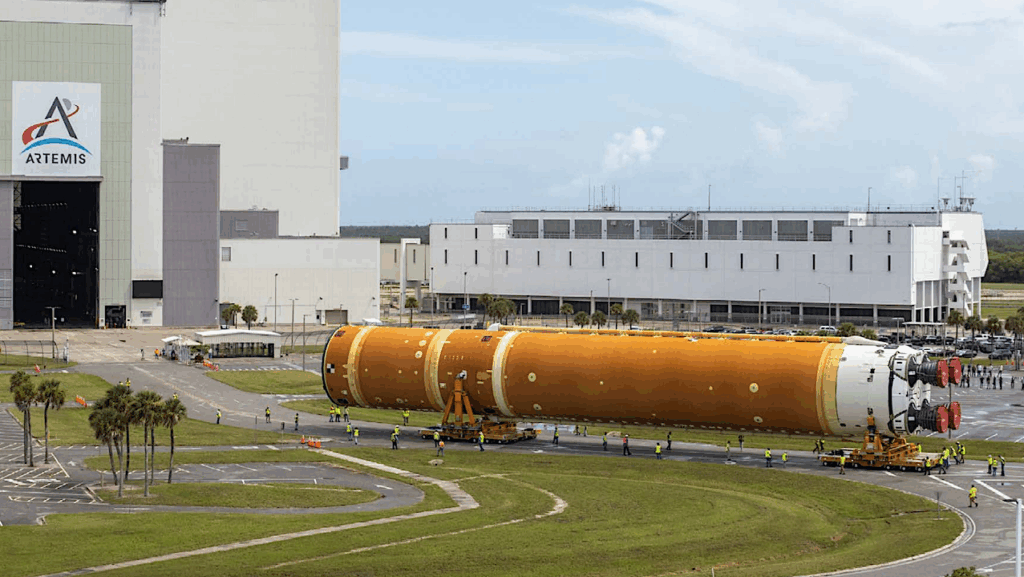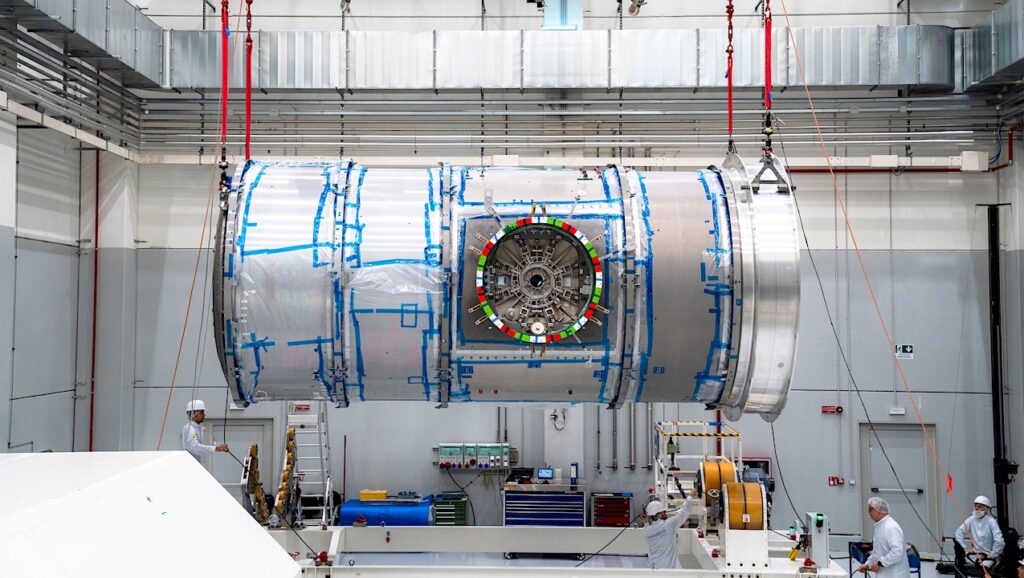A Cheaper Way To Fly SLS? Sure. Just Send Money.

Keith’s note: You have to read this solicitation to believe it. To build SLS NASA used existing Shuttle hardware to save money and then went off and reinvented everything that was “off the shelf” – making reusable SSMEs disposable, putting pieces together in new ways on Powerpoint, etc. Then they spent years and wasted billions of dollars to put it all together and tried to make it work. It is still sitting on the ground. Now NASA says that DST – Deep Space Transport – aka BoeingNorthropGrumman is the only company that is qualified to operate it. Well, DUH. NASA designed the whole SLS thing to be a one-off space system that no one in their right mind would build, much less want to operate. Can anyone operate it more cheaply? Of course not. Who’d even want to try? Just send money.
More: Exploration Production and Operations Contract (EPOC) Pre-solicitation Synopsis
13 responses to “A Cheaper Way To Fly SLS? Sure. Just Send Money.”
Leave a Reply
You must be logged in to post a comment.









*Shrugs* What can you say? At least a lot of its political backers in Congress were open about it being a jobs-saving program first and everything else second. A pity they couldn’t figure out a way to do that which didn’t involve wasting money and time.
test
The second SLS vehicle has already seen a 40% more efficient production flow compared to the first one
The third and fourth will improve on this further, each build in the production line naturally gets progressively faster and cheaper
Plus, most of the cost of launching an SLS is fixed program costs that are currently only accounted for into a single projected annual launch
With EPOC NASA wants to double the SLS production cadence, which would result in the cost of each launch being significantly lower
None of this is some kind of novel cost reduction method, despite your ever constant cynicism regarding the SLS since it’s inception
It seems to me you are advocating that SLS should be cheaper, only to then advocate against any attempt to make that happen
Strange
Every single time NASA puts forth one of these plans to save money and time etc on SLS it falls flat. And the best that its defenders can do is post anonymously on blogs.
Strange is a good description of SLS. The real problem is that it has no real purpose or use. It is incapable of supporting a lunar (or other human mission beyond low Earth orbit) without multiple launches. And the current plan involves a different launch vehicle and in orbit refueling. But with multiple launches and refueling, there is no actual need for SLS. The same missions could be accomplished using a slightly smaller and much less expensive launch vehicle. Say a Falcon Heavy, which is about 25 times cheaper than SLS. Reducing the cost of SLS by a factor of two doesn’t change that.
Too many jobs at stake, otherwise. If NASA just hires SpaceX to conduct our Lunar (“and then on to Mars” =) exploration, what happens to the folks in Utah, Alabama, MS and LA. A big chunk of the money NASA spends every year goes to jobs all over the country. Being spread out across the whole US, is actually a feature of SLS. Spread the wealth as much as possible…. Too bad it comes at the cost of going anywhere.
In orbit refueling?
NASA selected the SpaceX Starship for the Artemis Human Landing System. It requires in orbit refueling to get to lunar orbit, land and take off again. So NASA’s plan requires developing that technology.
It does not solve the fundamental SLS problem of being obsolete technology and design. Segmented solid motors, hydrogen as fuel are relics that should have died a while back.
Can you share the source for the first claim you made: “The second SLS vehicle has already seen a 40% more efficient production flow compared to the first one[,]”? I agree that around here SLS gets a bad rap. If there is good news to be found, I would be interested to read it.
The term “more efficient production flow” is a little hard to parse, as it’s not clear what is meant by “efficient” in this context. Is it referring to cost, time, a combination of both, or something else entirely (for example: parts or assembly step reduction)?
Thank goodness we finally have a bunch of commercial companies who are putting cost pressures on the Old Space squad. Old expensive disposable rockets finally will be a dying breed.
It should be unforgivable that NASA can just put something like this out, saying “the requirement if 42 metric tons to translunar injection with a single launch” and no one challenges it, the OIG doesn’t investigate it, and no one has to stand up and explain what is so special about doing it in a single launch?”
If that requirement were simply “42 metric tons to TLI in one package departing from either the surface or from LEO”, I bet you’d get several companies offering to do it rather than the sole-source without competition.
This YT video makes a compelling comparison with the science part of NASA and the HSF part of NASA. Insightful how companies and agencies have “the mission”, “the values”, and the “the game” which the last part is not taught or mentioned.
https://www.youtube.com/wat…